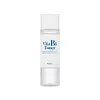What's inside
What's inside
 Key Ingredients
Key Ingredients

 Benefits
Benefits

 Concerns
Concerns

No concerns
 Ingredients Side-by-side
Ingredients Side-by-side

Water
Skin ConditioningButylene Glycol
Humectant1,2-Hexanediol
Skin ConditioningPanthenol
Skin ConditioningBetaine
HumectantGlycerin
HumectantChlorphenesin
AntimicrobialSaccharomyces/Viscum Album Ferment Extract
Skin ConditioningHydrolyzed Collagen
EmollientPalmitoyl Pentapeptide-4
Skin ConditioningSodium Hyaluronate
HumectantLactobacillus/Soybean Ferment Extract
Skin ConditioningSaccharomyces/Imperata Cylindrica Root Ferment Extract
EmollientDisodium EDTA
Acetyl Hexapeptide-8
HumectantCitric Acid
BufferingWater, Butylene Glycol, 1,2-Hexanediol, Panthenol, Betaine, Glycerin, Chlorphenesin, Saccharomyces/Viscum Album Ferment Extract, Hydrolyzed Collagen, Palmitoyl Pentapeptide-4, Sodium Hyaluronate, Lactobacillus/Soybean Ferment Extract, Saccharomyces/Imperata Cylindrica Root Ferment Extract, Disodium EDTA, Acetyl Hexapeptide-8, Citric Acid
Water
Skin ConditioningGlycyrrhiza Glabra Root Water
AntioxidantPEG-6 Caprylic/Capric Glycerides
EmulsifyingPEG-7 Glyceryl Cocoate
EmulsifyingDipropylene Glycol
Humectant1,2-Hexanediol
Skin ConditioningPoloxamer 184
EmulsifyingPhenoxyethanol
PreservativeGlycerin
HumectantButylene Glycol
HumectantRheum Palmatum Root Extract
AstringentPsidium Guajava Leaf Extract
AstringentRosa Centifolia Flower Extract
AstringentCamellia Sinensis Leaf Extract
AntimicrobialPerilla Ocymoides Seed Extract
AntioxidantPoncirus Trifoliata Fruit Extract
Skin ConditioningCitrus Aurantium Bergamia Fruit Oil
MaskingSodium Citrate
BufferingDisodium EDTA
Citric Acid
BufferingTocopheryl Acetate
AntioxidantGlycyrrhiza Glabra Root Extract
BleachingPaeonia Albiflora Root Extract
Skin ConditioningCimicifuga Dahurica Root Extract
AntioxidantPueraria Lobata Root Extract
HumectantPropylene Glycol
HumectantEthylhexylglycerin
Skin ConditioningWater, Glycyrrhiza Glabra Root Water, PEG-6 Caprylic/Capric Glycerides, PEG-7 Glyceryl Cocoate, Dipropylene Glycol, 1,2-Hexanediol, Poloxamer 184, Phenoxyethanol, Glycerin, Butylene Glycol, Rheum Palmatum Root Extract, Psidium Guajava Leaf Extract, Rosa Centifolia Flower Extract, Camellia Sinensis Leaf Extract, Perilla Ocymoides Seed Extract, Poncirus Trifoliata Fruit Extract, Citrus Aurantium Bergamia Fruit Oil, Sodium Citrate, Disodium EDTA, Citric Acid, Tocopheryl Acetate, Glycyrrhiza Glabra Root Extract, Paeonia Albiflora Root Extract, Cimicifuga Dahurica Root Extract, Pueraria Lobata Root Extract, Propylene Glycol, Ethylhexylglycerin
 Reviews
Reviews

Ingredients Explained
These ingredients are found in both products.
Ingredients higher up in an ingredient list are typically present in a larger amount.
1,2-Hexanediol is a synthetic liquid and another multi-functional powerhouse.
It is a:
- Humectant, drawing moisture into the skin
- Emollient, helping to soften skin
- Solvent, dispersing and stabilizing formulas
- Preservative booster, enhancing the antimicrobial activity of other preservatives
Butylene Glycol (or BG) is used within cosmetic products for a few different reasons:
Overall, Butylene Glycol is a safe and well-rounded ingredient that works well with other ingredients.
Though this ingredient works well with most skin types, some people with sensitive skin may experience a reaction such as allergic rashes, closed comedones, or itchiness.
Learn more about Butylene GlycolCitric Acid is an alpha hydroxy acid (AHA) naturally found in citrus fruits like oranges, lemons, and limes.
Like other AHAs, citric acid can exfoliate skin by breaking down the bonds that hold dead skin cells together. This helps reveal smoother and brighter skin underneath.
However, this exfoliating effect only happens at high concentrations (20%) which can be hard to find in cosmetic products.
Due to this, citric acid is usually included in small amounts as a pH adjuster. This helps keep products slightly more acidic and compatible with skin's natural pH.
In skincare formulas, citric acid can:
While it can provide some skin benefits, research shows lactic acid and glycolic acid are generally more effective and less irritating exfoliants.
Most citric acid used in skincare today is made by fermenting sugars (usually from molasses). This synthetic version is identical to the natural citrus form but easier to stabilize and use in formulations.
Read more about some other popular AHA's here:
Learn more about Citric AcidDisodium EDTA plays a role in making products more stable by aiding other preservatives.
It is a chelating agent, meaning it neutralizes metal ions that may be found in a product.
Disodium EDTA is a salt of edetic acid and is found to be safe in cosmetic ingredients.
Learn more about Disodium EDTAGlycerin is already naturally found in your skin. It helps moisturize and protect your skin.
A study from 2016 found glycerin to be more effective as a humectant than AHAs and hyaluronic acid.
As a humectant, it helps the skin stay hydrated by pulling moisture to your skin. The low molecular weight of glycerin allows it to pull moisture into the deeper layers of your skin.
Hydrated skin improves your skin barrier; Your skin barrier helps protect against irritants and bacteria.
Glycerin has also been found to have antimicrobial and antiviral properties. Due to these properties, glycerin is often used in wound and burn treatments.
In cosmetics, glycerin is usually derived from plants such as soybean or palm. However, it can also be sourced from animals, such as tallow or animal fat.
This ingredient is organic, colorless, odorless, and non-toxic.
Glycerin is the name for this ingredient in American English. British English uses Glycerol/Glycerine.
Learn more about GlycerinWater. It's the most common cosmetic ingredient of all. You'll usually see it at the top of ingredient lists, meaning that it makes up the largest part of the product.
So why is it so popular? Water most often acts as a solvent - this means that it helps dissolve other ingredients into the formulation.
You'll also recognize water as that liquid we all need to stay alive. If you see this, drink a glass of water. Stay hydrated!
Learn more about Water